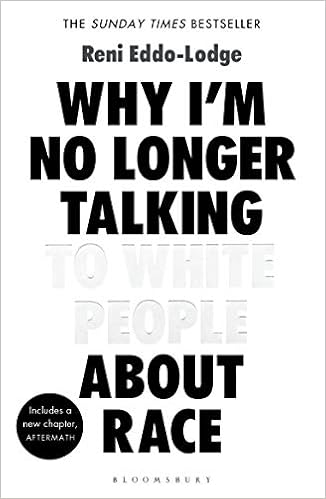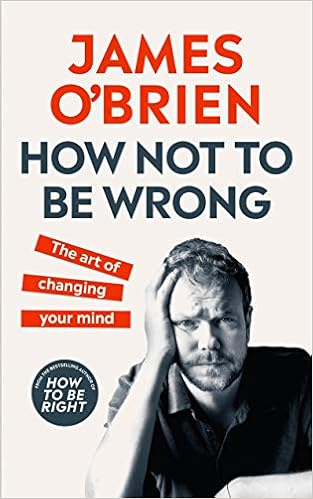Bookshelf – 2020 into 2021
It’s fair to say that the pandemic has shifted my relationship with reading over the past 12 months. The lack of travel, and missing the time in-between work commitments has changed my habits. I once carried at least one book with me wherever I went around the country.
I’ve gone through months of not reading at all, which was more just coping with family and work pressures throughout lockdown, while also being one of the people that definitely didn’t have the time to complete Netflix.
I have found some times to switch off, often when I took a few days off work every few months throughout the year. There have been new books that I’ve picked up, and a few that I’ve finished.
I wanted to recommend and keep a note of some of those books here as I try to start reading more again. It’s been a while since I last revisited reading lists on this blog, so here goes.
Dear Life: A Doctor’s Story of Love, Loss and Consolation
Dr Rachel Clarke

“If a single principle underpins palliative care, it is the living and dying are not binary opposites. The dying …are still very much alive.”
I read this book during a few days off in October 2020. Despite the pandemic and nightly news headlines, hearing a story of care and compassion, even in the context of palliative care, was very welcome at this time.
I loved the examples of storytelling and how this connects to meeting emotional as well as physical needs. This example which describes the work of a children’s play specialist is wonderful:
“After careful consideration of this matter from her young patients’ perspective, the play specialist invented something she called ‘magic string’ …a simple ball of multicoloured twine, one end of which the child could clasp, while the other would weave out of the room, under the door, to be held by their parent. She had devised a literal thread that was simultaneously, a narrative thread, a story that a child could tell themselves, while lying cold, alone, behind a lead-lined door, that Mummy or Daddy were still there, on the other-side caring and holding onto them.”
White Fragility: Why It’s So Hard for White People to Talk About Racism
Robin DiAngelo

“People who claim not to be prejudiced are demonstrating a profound lack of self-awareness.”
This quote was me for most of my life. I’m trying to do better.
I read this book at the start of May 2020. The death of George Floyd later that month and then the Black Lives Matter movement became defining moments of the year. The main quote that I keeping coming back to as a constant reminder to challenge myself is this:
“White supremacy describes the culture we live in, a culture that positions white people and all that is associated with them (whiteness) as ideal. White supremacy is more than the idea that whites are superior to people of colour; it is the deeper premise that supports this idea–the definition of whites as the norm or standard for human, and people of colour as a deviation from that norm.”
Why I’m No Longer Talking to White People About Race
Reni Eddo-Lodge

“…white privilege is an absence of the negative consequences of racism”
I read this book at the same time as White Fragility. It’s another challenge to do better and to be much more self-aware of the privilege I’ve had as a white man growing up and living in the UK.
I’m also now part way way through Brit(ish) – On Race, Identity and Belonging by Afua Hirsch which I started reading around the same time.
The Practice: Shipping Creative Work
Seth Godin

I’ve just finished this book, having read the first half a few months ago.
It’s not a long read, but it’s written with a clarity I’ve always aspired to having read Seth Godin books for nearly 20 years. I definitely needed to read something fresh about creative practice, and this was the perfect encouragement to start developing my own writing and to start sharing more again (getting past my own creative resistance).
This book reminded me of when I first read Feel the Fear and do it Anyway in 2010, as well as The War of Art (both of which I highly recommend).
A favourite quote from The Practice:
“Everyone who creates feels resistance. Everyone who is seriously engaged in the deep effort of inventing and shipping original work feels the fear. That’s not the question. The question is: where do you put the fear?”
How Not to be Wrong: The Art of Changing Your Mind
James O’Brien

I’ve just finished this book (I had a few days off work last week). I also read the other James O’Brien book last year – How To Be Right …in a world gone wrong.
There were good points in both books about how hard is is to change your own mindset, as well anyone else’s. There was also a good interview included here with Malcolm Gladwell referencing his book Talking to Strangers which I read last year.
A favourite quote from How Not To Be Wrong that resonated with me:
“…experiences are worth a million times more than opinions when we come to access what is ‘right’ and what is ‘wrong’.”
What Does Jeremy Think?
Suzanne Heywood

I’ve just started this book and it’s a long read (so might take me a while).
I heard a lot about Sir Jeremy Heywood when working in the Civil Service, and remember how he supported One Team Gov. Having read this review in the Observer I’m sure that there’s a lot to learn about public service here.
How to Listen: Tools for opening up conversations when it matters most
Katie Colombus

I’m planning to read this soon. I came across the book through The Samaritans.
I’ve always aspired to be better at listening. I feel strongly that we will all need better tools for conversations and dealing with the collective trauma that society has gone through.
The Great Pretender: The Undercover Mission that Changed our Understanding of Madness
Susannah Cahalan

I can’t remember where I first came across this, but another book I intend to start soon. This book in an investigation into how we understand ‘madness’ and mental health.
Jews Don’t Count
David Baddiel

I’m reading this now following lots of media coverage over the past month or so.
Forever Employable: How to Stop Looking for Work and Let Your Next Job Find You
Jeff Gothelf

I listened to the audiobook of Forever Employable when I had to take a couple of sick days off work earlier in the year.
I’m not sure I fully agree with the idea of ‘forever employable’ as there’s too much white privilege wrapped up in this, no matter how brave you are, or willing to find your voice and make your ideas count. There was a lot to learn here about telling your story better, and finding and understanding your audience which I really appreciated. I also like the focus on problem framing and how to apply this:
“What are the benefits of your idea? What problem are you solving for people, how are you promising to make things better for them?”
Ruined by design: How Designers Destroyed the World, and What We Can Do to Fix It
Mike Monteiro

This book was a birthday present last May.
I felt like I was the last designer to read this book (based on my Twitter feed). It definitely pulls no punches in its critique of the design industry I’m very much a part of. If I was going to pick a highlight here, I thought the book was particularly clear when explaining the value of building diverse teams:
“You put people from different backgrounds together, and they can see things from multiple points of view. They cover each others blind spots. It’s a smart move.”
Range: How Generalists Triumph in a Specialised World
David Epstein

“Specialisation is obvious: keep going straight. Breadth is tricker to grow.”
Another book I read earlier in the year. This is a subject I’ve become very interested in working with design ‘specialists’ in government. Most of the problems we work on aren’t solvable with linear thinking i.e. you can’t just keep going straight.
I intend to explore this more. How designers (all the different types of specialisms) work with ambiguity and uncertainty is key here:
“If you’re working on well-defined and well-understood problems, specialists work very, very, well …As ambiguity and uncertainty increases, which is the norm with system problems, breadth becomes increasingly important.”
Anti-Social: The secret diary of an anti-social behaviour officer
Nick Pettigrew

I read this book last year (over the summer, including a brief holiday in Cornwall). It’s a very honest account of the life of an anti-social behaviour officer. Funny and extremely sad in places.
There is a very poignant section at the end of Anti-Social that talks about how we care for and prioritise the emotional needs of society:
“My job largely existed not because of how terrible humanity is, but because humanity has some pretty terrible coping mechanisms for stress, ignorance, despair, and frustration. These can often involve thoughtlessness, lashing out or reckless disregard for other people’s feelings, which can look a lot like vindictiveness or malice, but are often just the howl of the powerless.”
And on the impact of austerity politics:
“…missing from society are the dozens of little knots that held the safety net together but have been austerity-ed out of existence: libraries, Sure Start schemes, youth centres, and hundreds of other services that couldn’t turn a profited didn’t look good on a whizzy PowerPoint presentation, but helped stop people failing through the net, and helped to keep this country as a cohesive society rather than a collection of terrified individuals wondering when their world is going to collapse and who they can blame when it does.”
How design makes the world
Scott Berkun

And finally, I read Scott Berkun’s latest book earlier in the year. This was another good reminder of why design is a good idea, and is a nice collection of examples to support that statement.
Some examples of why design questioning, and framing is important that I noted down here:
“Once you commit to good design and start thinking clearly, another layer of questions is revealed. This is good. Good questions lead to more good questions, just as good thinking leads to more good thinking.”
“The nuance of how the problem is described transforms what kind of solutions you’re likely to consider, which means there is a craft to defining problems that’s as important as designing solutions. This is called framing the problem – how changing your point of view, even if the object is the same, changes its meaning.”
I’m always open to new book recommendations and interested in what other people are reading. Let me know if you have thoughts on any of the books I’ve included here.
This is my blog where I’ve been writing for 20 years. You can follow all of my posts by subscribing to this RSS feed. You can also find me on Bluesky and LinkedIn.